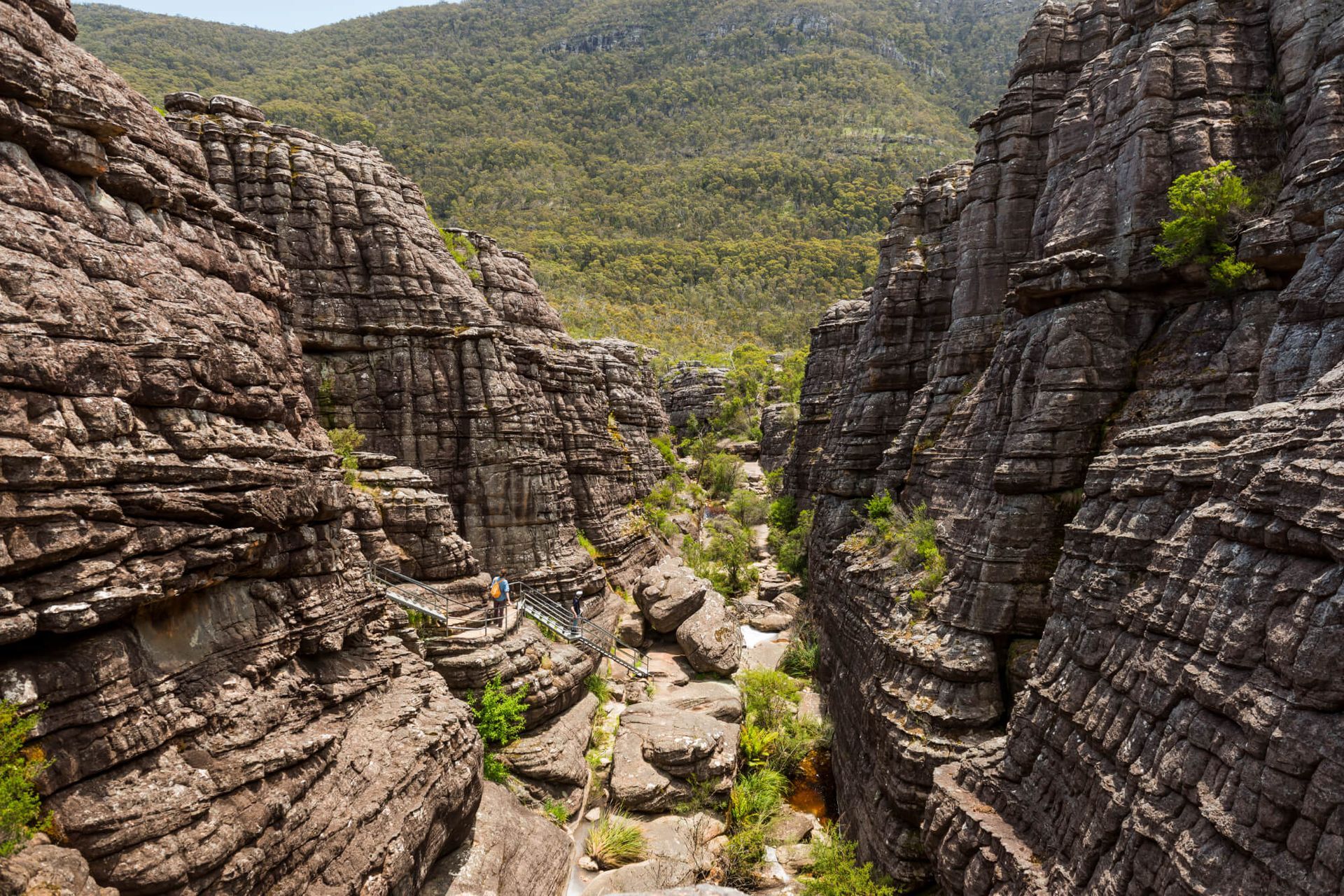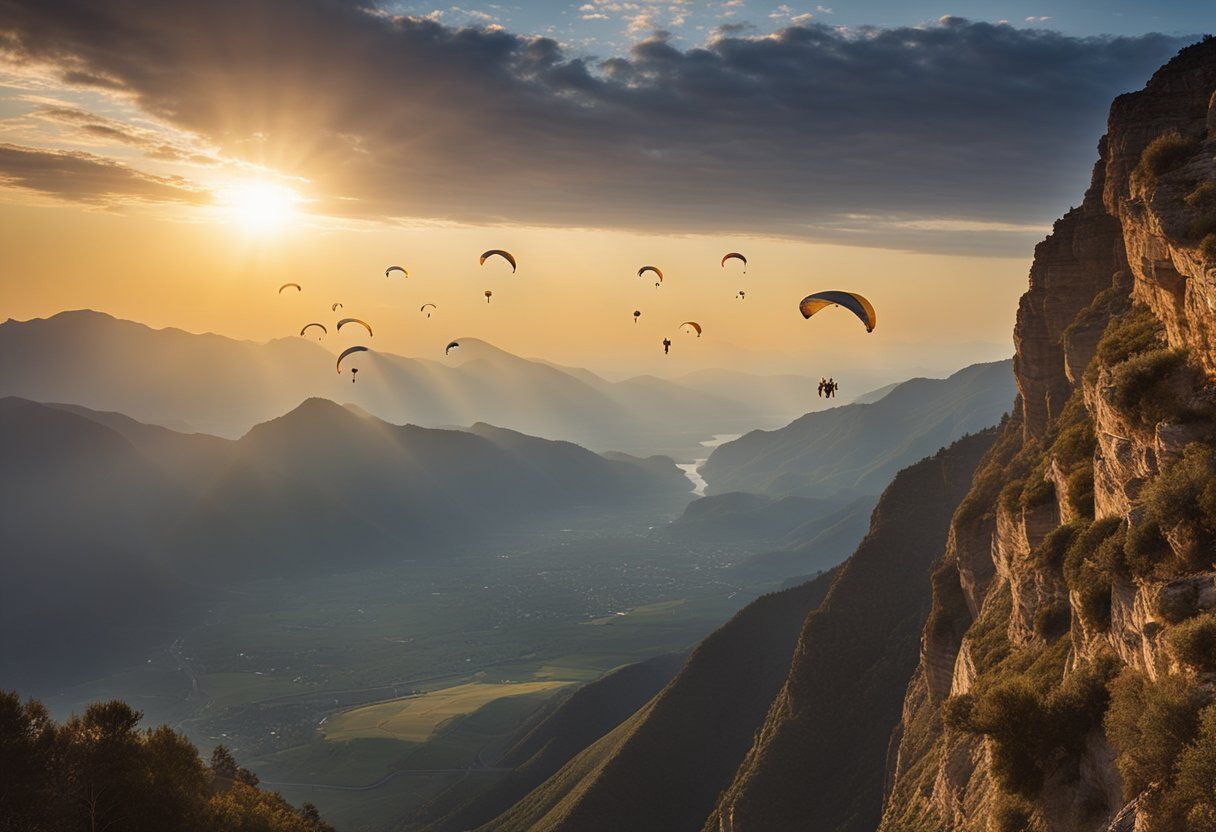To share
Welcome to Grampians National Park, where nature's majesty unfolds in breathtaking splendor. Nestled in the heart of Victoria, Australia, this stunning national park offers a mesmerizing landscape that will leave you awestruck. From rugged mountain ranges and cascading waterfalls to abundant wildlife and ancient rock formations, the Grampians are a nature lover's paradise.
Immerse yourself in the picturesque beauty of this iconic destination as you explore its diverse terrain. Marvel at the panoramic views from lofty peaks, embark on scenic hikes through lush forests, and discover hidden valleys adorned with vibrant wildflowers. As you venture deeper into the park, you may encounter native animals like kangaroos, emus, and koalas, adding to the enchantment of your experience.
For adventure enthusiasts, there's an array of activities to choose from. Scale rock faces for thrilling rock climbing, abseil down towering cliffs, or test your endurance on challenging mountain bike trails. And don't forget to relish moments of tranquility by serene lakes or under the starry night sky.
Grampians National Park is a destination that promises unforgettable memories and a newfound appreciation for the wonders of the natural world. So, pack your sense of adventure and immerse yourself in the majestic beauty of this Australian gem.

Location and Geographical Features of Grampians National Park
Grampians National Park is situated in the western part of Victoria, approximately 260 kilometers northwest of Melbourne. Spanning over 167,000 hectares, this vast expanse of natural beauty is characterized by its rugged mountain ranges, deep valleys, and dramatic cliffs. The park is part of the Grampians mountain range, which has been shaped over millions of years through geological processes, resulting in a landscape that is both diverse and enchanting. The highest peak, Mount William, rises to an elevation of 1,167 meters, offering breathtaking panoramic views that draw visitors from near and far.
The geographical features of Grampians National Park are incredibly varied, with sandstone cliffs, lush forests, and open woodlands creating a remarkable tapestry of ecosystems. The park's unique topography is home to several distinct landforms, including the renowned Balconies, which provide visitors with stunning vistas over the surrounding valleys. Additionally, the park is crisscrossed by numerous rivers and creeks, including the Fyans Creek and the Wannon River, which add to the park's picturesque scenery. These waterways not only enhance the beauty of the landscape but also support the diverse flora and fauna that thrive in this environment.
As you explore Grampians National Park, you'll encounter dramatic rock formations that are a testament to the area's geological history. The sandstone cliffs are not only a remarkable sight but also serve as a playground for rock climbers and adventurers seeking thrills. The park's elevation changes create microclimates that contribute to the rich biodiversity found within its boundaries, making it a haven for nature enthusiasts and those looking to experience the great outdoors. Whether you are hiking through dense forests or standing atop a rocky outcrop, the geographical features of Grampians National Park are sure to leave you in awe.
Flora and Fauna in Grampians National Park
The flora and fauna of Grampians National Park are as diverse as its landscapes, making it a hotspot for biodiversity. The park is home to over 1,000 plant species, including a variety of unique wildflowers that bloom in vibrant colors during spring. Among the most notable are the spectacular orchids, which attract both visitors and pollinators alike. The park's vegetation ranges from open woodlands dominated by eucalyptus trees to dense heathlands filled with colorful wildflowers, providing a rich habitat for various animal species.
Wildlife enthusiasts will find Grampians National Park particularly rewarding, as it is home to an impressive array of animals. The park supports a population of kangaroos, which can often be spotted grazing in the early morning or late afternoon. Emus, koalas, and a plethora of bird species, including the striking lyrebird and the rare eastern yellow robin, also call this region home. The diverse habitats within the park offer unique opportunities for wildlife observation, whether it be along the trails or near water sources where animals come to drink.
In addition to its charismatic megafauna, Grampians National Park plays a crucial role in the conservation of various threatened species. The park is a vital refuge for many native animals, including the endangered brush-tailed rock-wallaby, which relies on the park's rocky outcrops for shelter. Conservation efforts are ongoing to protect these vulnerable species and their habitats, ensuring that future generations can continue to appreciate the rich biodiversity that the Grampians have to offer. With each visit, you may encounter something new, from the delicate wildflowers to the majestic wildlife that thrives in this extraordinary environment.
Indigenous Cultural Significance of Grampians National Park
Grampians National Park holds profound cultural significance for the Indigenous peoples of Australia, particularly the Gunditjmara and Jardwadjali nations. For thousands of years, these groups have inhabited the region, maintaining a deep connection to the land and its resources. The park's stunning landscapes are not only a source of natural beauty but also carry stories and traditions that have been passed down through generations. Indigenous Australians view the Grampians as a sacred landscape, rich with cultural heritage and spiritual significance.
The rock art sites within the park are among the most important cultural heritage sites in Victoria, showcasing ancient artworks that depict the beliefs, customs, and daily life of the Indigenous peoples. These rock paintings illustrate complex stories and serve as a testament to the long-standing relationship between the Indigenous peoples and the land. Sites such as the Ngamadjidj Shelter and the Manja Shelter offer visitors a glimpse into this rich cultural heritage, providing an opportunity to learn about the traditions and history of the area's first inhabitants.
- Visitors to Grampians National Park can engage with Indigenous culture through guided tours led by local Indigenous groups. These experiences allow you to gain a deeper understanding of the land's significance and the traditional ecological knowledge that has been cultivated over millennia. By honoring and respecting the cultural heritage of the Indigenous peoples, visitors can foster a greater appreciation for the natural beauty of the Grampians and the stories that have shaped this remarkable landscape.
Popular Attractions and Activities in Grampians National Park
Grampians National Park is teeming with attractions and activities that cater to a wide range of interests, making it an ideal destination for outdoor enthusiasts and families alike. One of the park’s most famous landmarks is the Pinnacle Lookout, which offers a breathtaking view of the surrounding mountains and valleys. A popular hiking trail leads to this lookout, allowing visitors to experience the beauty of the park while enjoying a rewarding vista at the end. The journey to the Pinnacle is characterized by an array of scenic landscapes, from rocky outcrops to lush forests, making it a highlight for many.
Another must-visit attraction within the park is Mackenzie Falls, one of Victoria's largest and most spectacular waterfalls. The cascading waters create a stunning display, especially after rainfall, and the area surrounding the falls is ideal for picnicking and relaxation. There are various walking tracks that lead to vantage points where visitors can admire the falls from different perspectives. The sound of the rushing water and the surrounding flora make this a serene spot to unwind and connect with nature.
For those seeking adventure, Grampians National Park offers rock climbing and abseiling opportunities, with a range of cliffs and crags suited for all skill levels. The park is renowned as one of Australia’s premier rock climbing destinations, attracting climbers from all over the world. Additionally, mountain biking trails wind through the park, providing an exhilarating way to explore the diverse terrain. Whether you're seeking peaceful moments in nature or adrenaline-pumping activities, the Grampians has something to offer everyone.
Hiking and Nature Trails in Grampians National Park
Hiking is one of the most popular ways to explore the breathtaking landscapes of Grampians National Park, with a network of trails that cater to all levels of fitness and experience. The park boasts over 160 kilometers of walking tracks, ranging from easy strolls to challenging multi-day hikes. The diverse range of trails allows visitors to immerse themselves in the stunning natural environment while discovering hidden gems along the way. One of the standout hikes is the Grampians Peaks Trail, an ambitious 160-kilometer trek that showcases the park's rugged beauty and breathtaking views.
For those looking for shorter walks, the Wonderland Loop is a fantastic option. This 6-kilometer circuit takes you through unique rock formations, dense bushland, and offers stunning views of the surrounding valleys. The trail is well-marked and provides opportunities to spot local wildlife, making it a great option for families and casual hikers. Additionally, the Burchell Trail leads to the spectacular Mackenzie Falls, providing a scenic experience while allowing hikers to enjoy the sound of cascading water.
Safety is paramount when hiking in the Grampians, and it's essential to prepare adequately before setting out. Carrying sufficient water, wearing appropriate footwear, and checking the weather conditions are vital steps to ensure a safe and enjoyable experience. Many trails are also equipped with information signs that provide insights into the local flora and fauna, enriching your journey through the park. Each hike offers a unique perspective of the Grampians, allowing you to connect with the beauty of nature in an unforgettable way.
Camping and Accommodation Options in Grampians National Park
Grampians National Park offers a variety of camping and accommodation options, catering to all preferences and budgets. For those looking to immerse themselves in nature, camping is a fantastic way to experience the park's beauty up close. There are several designated campgrounds within the park, such as the popular Halls Gap, where visitors can set up tents or park caravans amidst stunning natural surroundings. These campgrounds often provide basic amenities, including picnic tables, toilets, and barbecues, making for a comfortable outdoor experience.
In addition to traditional camping, the Grampians also features more luxurious accommodation options for those seeking a touch of comfort. Lodges, cabins, and self-contained units are available in Halls Gap and surrounding areas, offering a cozy retreat after a day of exploration. These accommodations provide a perfect base for families or groups, with facilities to prepare meals and relax together. Staying in the park allows guests to enjoy the tranquility of the area and easy access to various attractions.
For visitors looking for a unique experience, Glamping has become increasingly popular in the Grampians. Glamping sites provide the comfort of a hotel combined with the adventure of camping, featuring furnished tents or cabins equipped with cozy beds and private facilities. This option allows you to enjoy the beauty of the outdoors without sacrificing comfort. Whether you prefer a rustic camping experience or a luxurious getaway, Grampians National Park has options to suit every traveler’s needs.
Best Times to Visit Grampians National Park
Choosing the right time to visit Grampians National Park can significantly enhance your experience, as each season offers its unique charm and opportunities for exploration. Spring (September to November) is a particularly vibrant time, as wildflowers bloom across the park, painting the landscape with a riot of colors. The pleasant weather and mild temperatures make it an ideal season for hiking, picnicking, and wildlife watching. It's also the perfect time to witness the park come alive with activity, as native animals emerge from their winter slumber.
Summer (December to February) brings warmer temperatures, making it a popular time for outdoor activities. However, visitors should be mindful of the heat and take necessary precautions, such as staying hydrated and wearing sun protection. This season is also great for swimming in the park's refreshing lakes and rivers, where visitors can cool off after a day of hiking. The longer daylight hours allow for extended exploration, giving adventurers more time to soak in the stunning views.
- Autumn (March to May) is another excellent time to visit, as the foliage transforms into a tapestry of rich reds and golds. The cooler temperatures create comfortable hiking conditions, and the park is less crowded than in the summer months. This season is perfect for photography enthusiasts, as the changing leaves create breathtaking landscapes. Winter (June to August) offers a different experience, with cooler temperatures and occasional snowfall, creating a serene atmosphere. While some trails may be less accessible, winter in the Grampians presents a unique opportunity for solitude and reflection amidst the stunning scenery.
Safety Tips and Guidelines for Visiting Grampians National Park
Visiting Grampians National Park is an exciting adventure, but it's essential to prioritize safety during your time in this natural wonderland. One of the most critical aspects of ensuring a safe visit is being prepared for the diverse weather conditions that can occur. The weather in the Grampians can change rapidly, so it's advisable to check forecasts before heading out and to dress in layers to accommodate fluctuating temperatures. Additionally, carrying a map and compass or a GPS device can help you navigate the park's extensive trail system while keeping you on track.
Wildlife encounters are a highlight of any visit to Grampians National Park, but it's important to respect the animals and maintain a safe distance. Feeding wildlife is strictly prohibited, as it can disrupt their natural behaviors and lead to dangerous situations. If you encounter an animal on the trail, observe it quietly from a distance and allow it to move away at its own pace. Being mindful of your surroundings will help ensure a safe and enjoyable experience for both you and the wildlife.
- Finally, staying on marked trails is crucial for your safety and the preservation of the park's delicate ecosystems. Straying from established paths can damage native vegetation and lead to erosion. Familiarizing yourself with the park's guidelines and regulations will help protect the natural environment while ensuring a safe visit. By taking these precautions and respecting the park, you can fully immerse yourself in the beauty of Grampians National Park while enjoying a safe and memorable experience.
Conclusion and Final Thoughts
Grampians National Park is a true gem in Victoria, showcasing the awe-inspiring beauty of Australia's natural landscapes. From its stunning geographical features to its rich biodiversity and cultural significance, the park offers something for everyone. Whether you’re an adventure seeker, a wildlife enthusiast, or simply looking for a peaceful escape, the Grampians provide an ideal setting to connect with nature and create lasting memories.
As you explore the park's myriad attractions and activities, take the time to appreciate the intricate details of this remarkable environment. The vibrant wildflowers, towering cliffs, and diverse wildlife all contribute to the unique tapestry that makes Grampians National Park so special. Engaging with the Indigenous history and culture enriches your experience, deepening your appreciation for the land and its stories.
- In conclusion, Grampians National Park is not just a destination; it's an experience that invites you to slow down, breathe deeply, and immerse yourself in the beauty of the natural world. So pack your bags, grab your hiking boots, and embark on an adventure that promises to inspire and rejuvenate your spirit amidst the majestic landscapes of this extraordinary Australian treasure.




